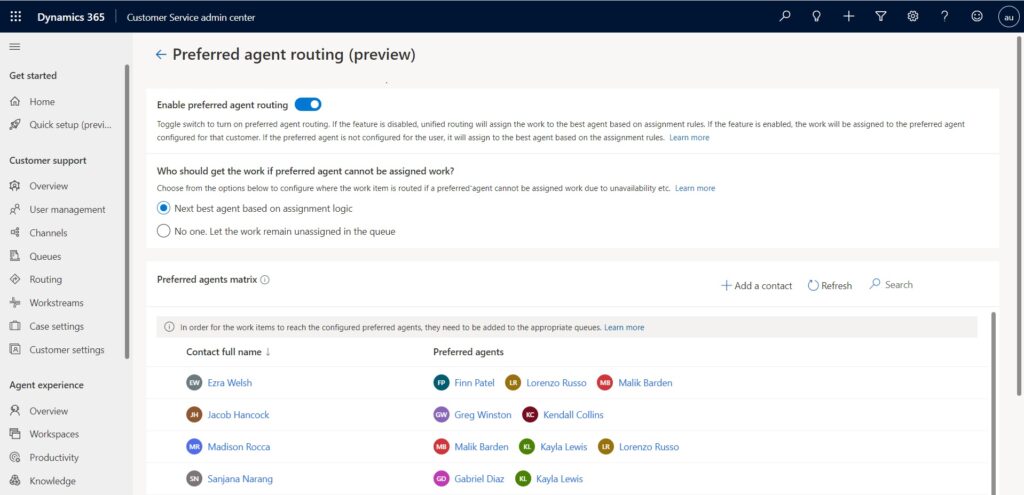
Use preferred agent routing to create lifelong customer relationships
Organizations are looking for ways to offer hyper-personalized service and foster deeper relationships with their customers. Customers want to connect to agents who understand their needs. They feel more comfortable talking to an agent who has served them in the past, knows about their issues, and can resolve them quickly. Agents want to serve their customers, meet service-level agreements (SLAs), and receive high satisfaction ratings. The key to achieving all these goals is a good relationship between agents and customers. Preferred agent routing in Microsoft Dynamics 365 Customer Service can help build those relationships.
Introducing preferred agent routing in Customer Service
With the preferred agent routing feature in Dynamics 365 Customer Service, organizations can offer relationship management to their customers. Once set up, the unified routing system will connect the customers to their corresponding preferred agents, thus ensuring a delightful service experience.
Administrators can associate up to three agents with a contact to help ensure that if a customer’s most preferred agent isn’t available, they can still be connected to an agent who is familiar with their past interactions and preferences.
Fallbacks ensure no customer goes unattended
In case no preferred agent is available, fallback options ensure that a customer will never be left unattended. Administrators can choose one of two fallback options:
- Next best agent based on assignment logic. The system will try to find an available agent based on the assignment rules already in place. If no preferred agent is found or is available, then the work item is assigned to other available agents, ensuring that the customer is always served. We suggest this option for live chat conversations and voice channel calls.
- No one. Let the work remain unassigned in the queue. A supervisor or available agent must manually pick up the work item. We suggest this option for asynchronous or social channels, where the customer doesn’t directly connect to a live agent.

Preferred agent routing in action: Contoso Coffee’s Gold membership plan
To see how your organization can benefit from preferred agent routing, consider the following scenario based on the illustration above.
Contoso Coffee recently started offering a Gold membership plan. Gold membership comes with premium customer service, which includes a dedicated relationship manager (preferred agent).
Madison calls the support line to report a problem with her old coffee machine. She has such a pleasant interaction with the support agent, Malik, that she buys a Contoso Café 100 and enrolls in the Gold membership plan.
When Kayla, the customer success manager, gets the new subscription information, she reviews Madison’s customer service history. Noticing the positive sentiment in her interaction with Malik, she associates Malik as Madison’s preferred agent.
A few months later, Madison buys a bag of coffee beans and receives the wrong product. She initiates a chat to get a replacement. The chat is automatically routed to Malik, Madison’s preferred agent. Knowing her purchase history and remembering that she had praised Arabica coffee beans in their previous interaction, Malik suggests replacing the incorrect product with Contoso’s new Arabica beans, recommended for the Café 100.
Madison feels happy and satisfied with the personalized support she received, without having to explain her issue to different agents. Malik feels happy to receive a high satisfaction rating from Madison.
Learn more
Check out the documentation for more information about automatic assignment and preferred agent routing in Dynamics 365 Customer Service:
Configure routing to preferred agents | Microsoft Docs
Assignment methods for queues | Microsoft Docs
Configure assignment methods for queues | Microsoft Docs
This blog post is part of a series of deep dives that will help you deploy and use unified routing at your organization.




